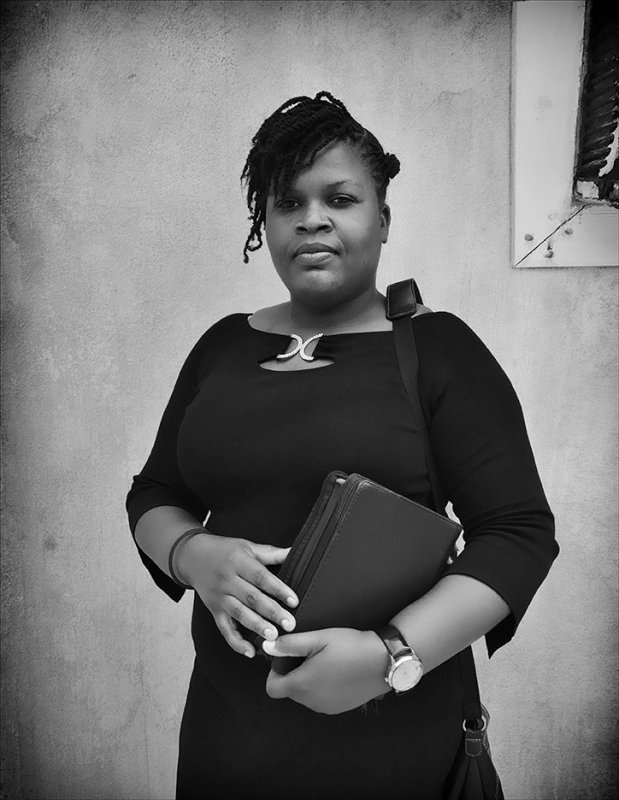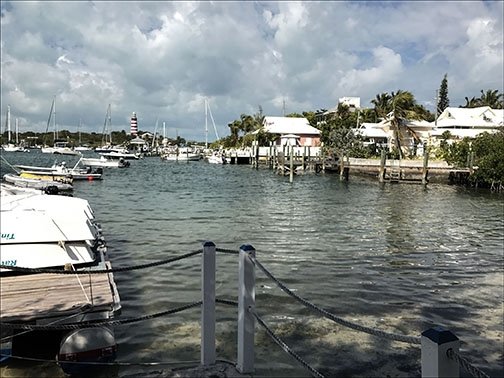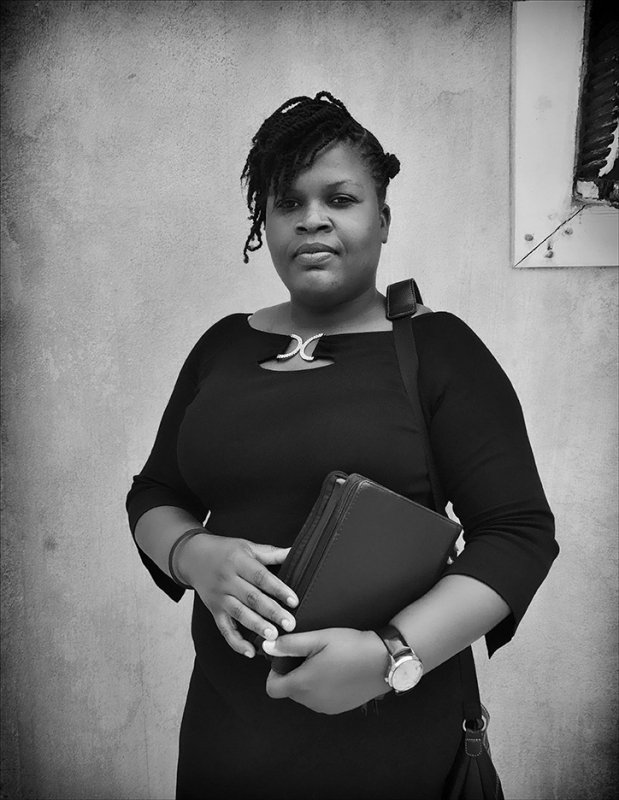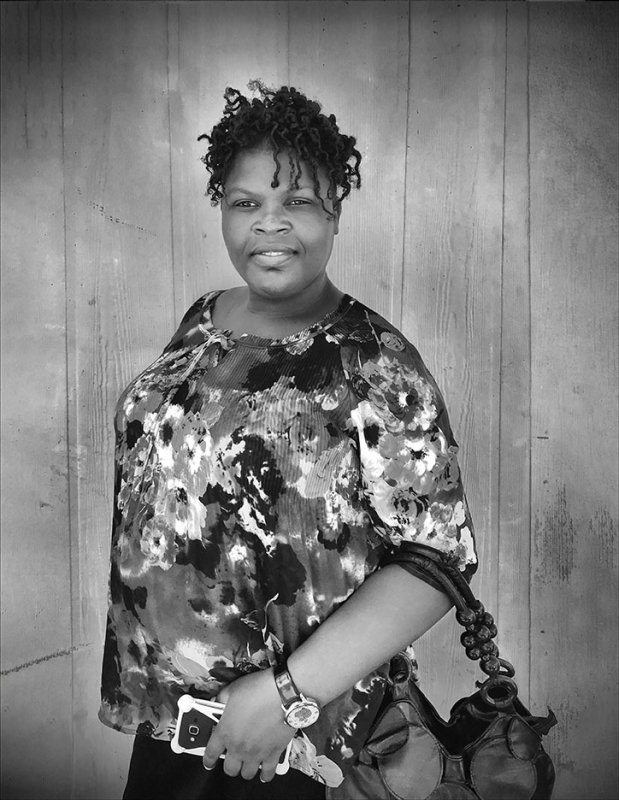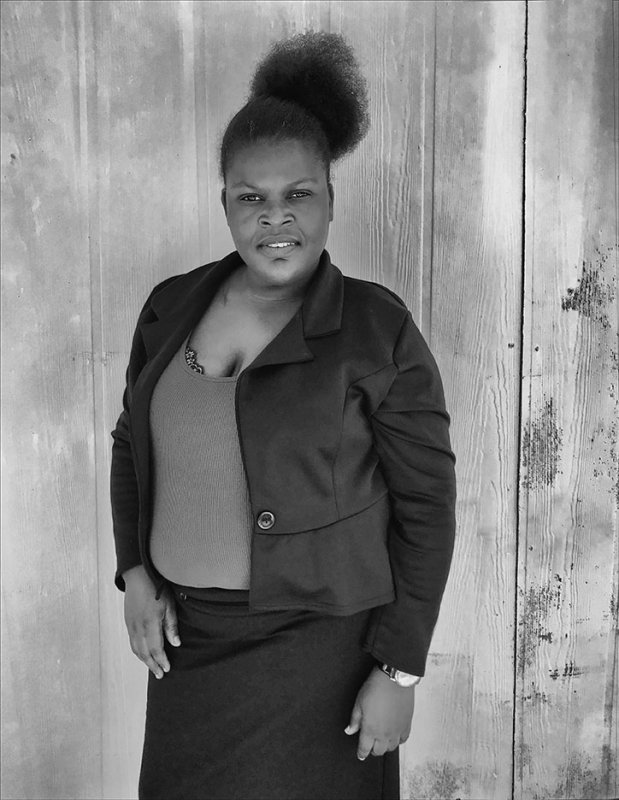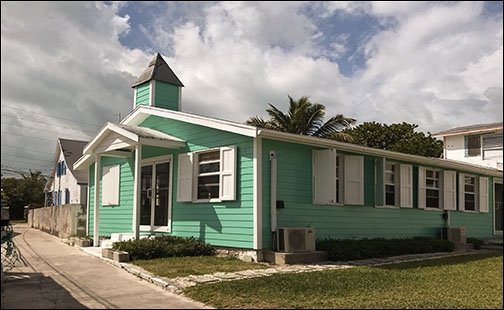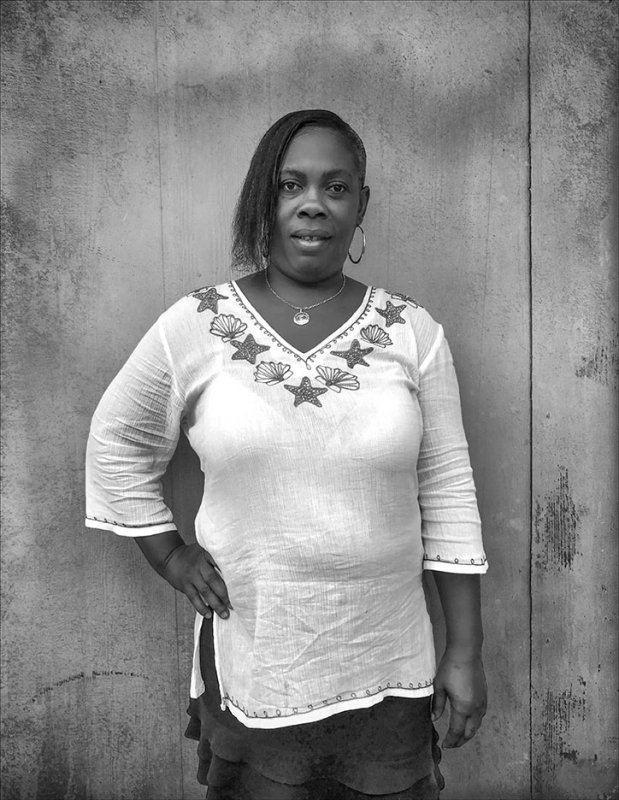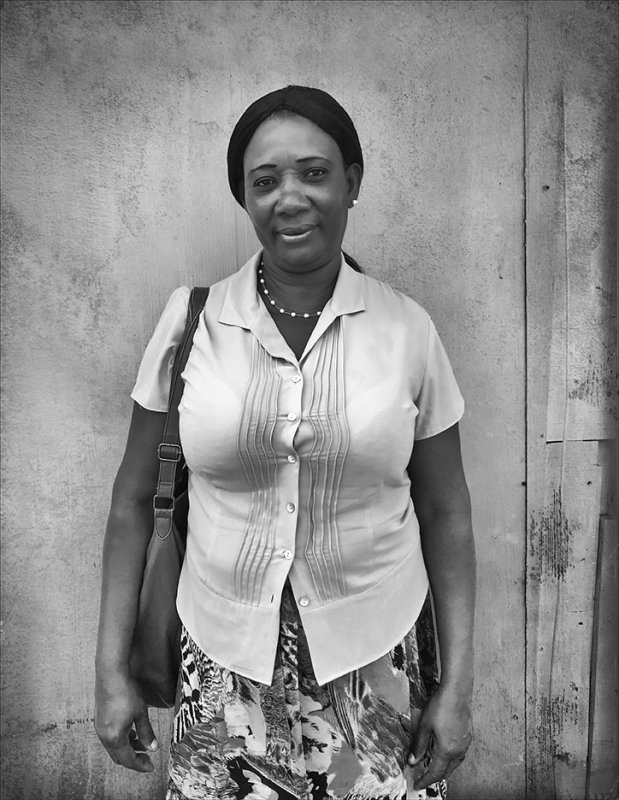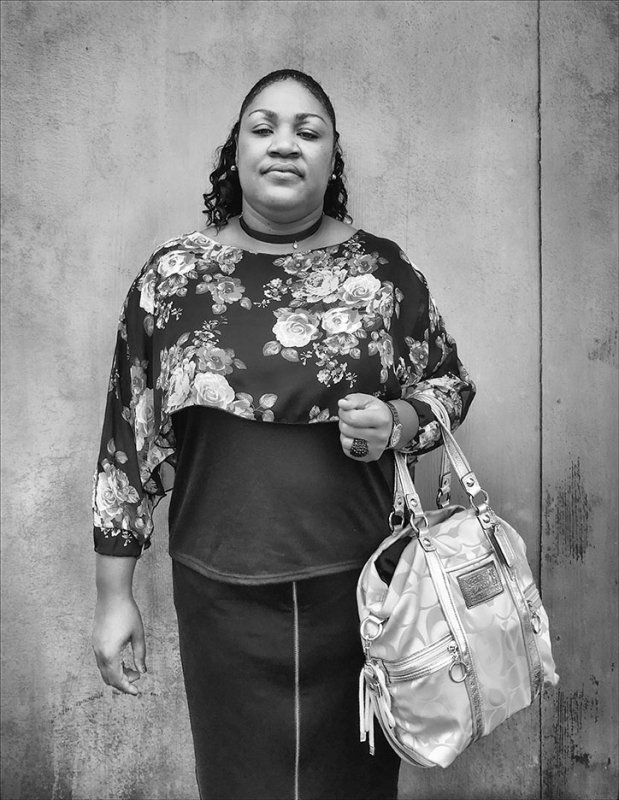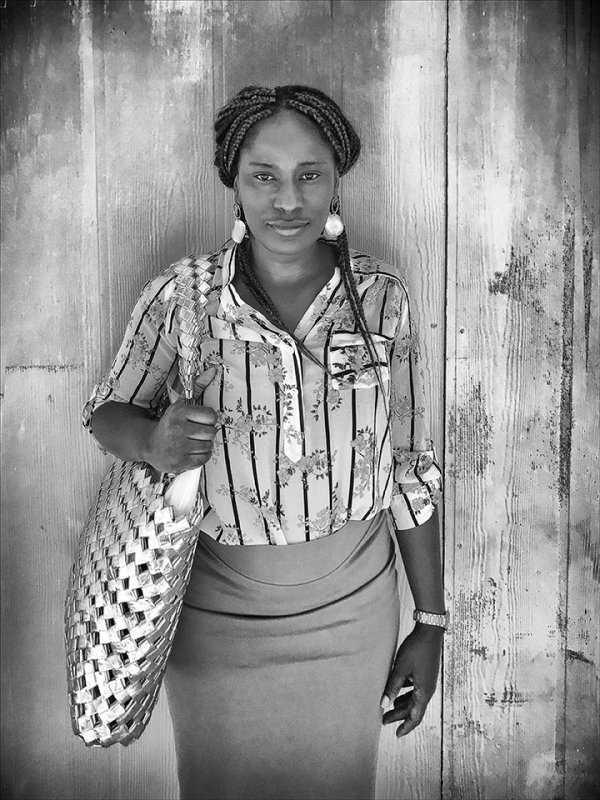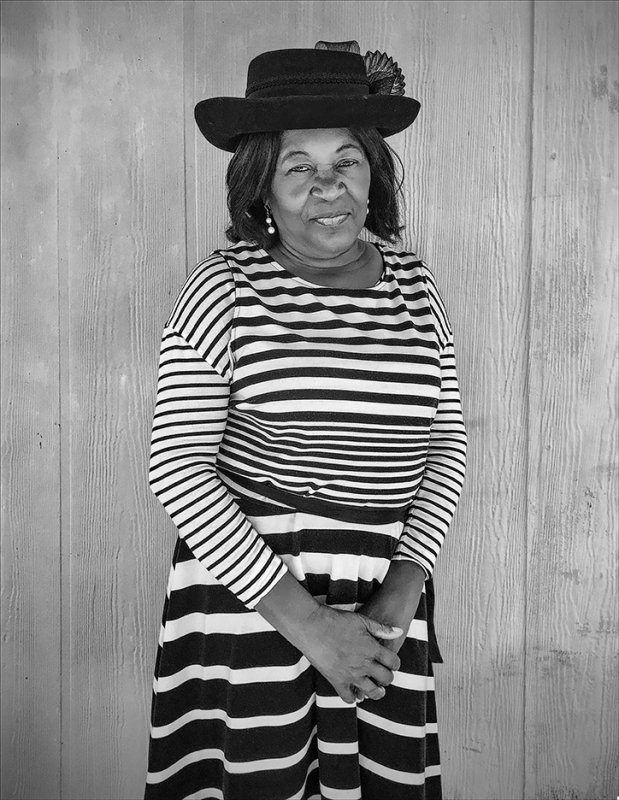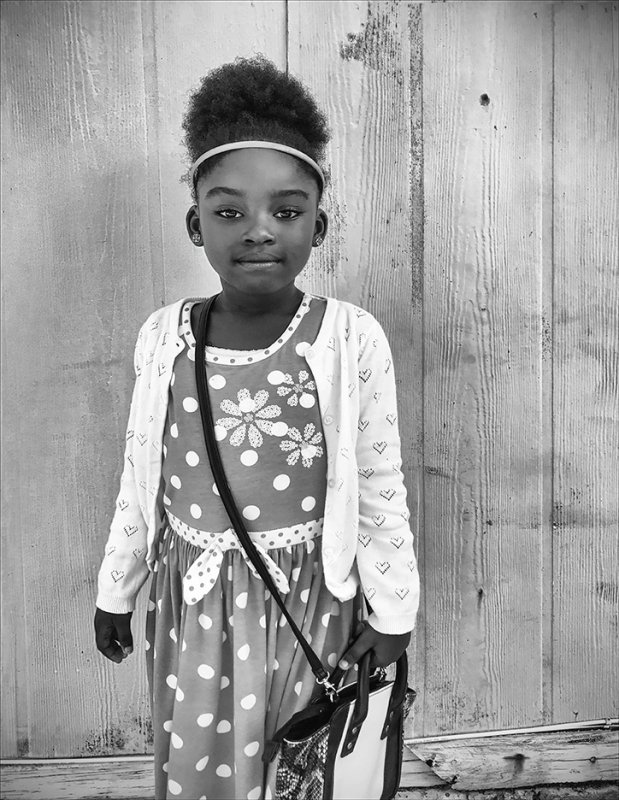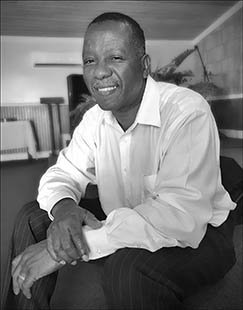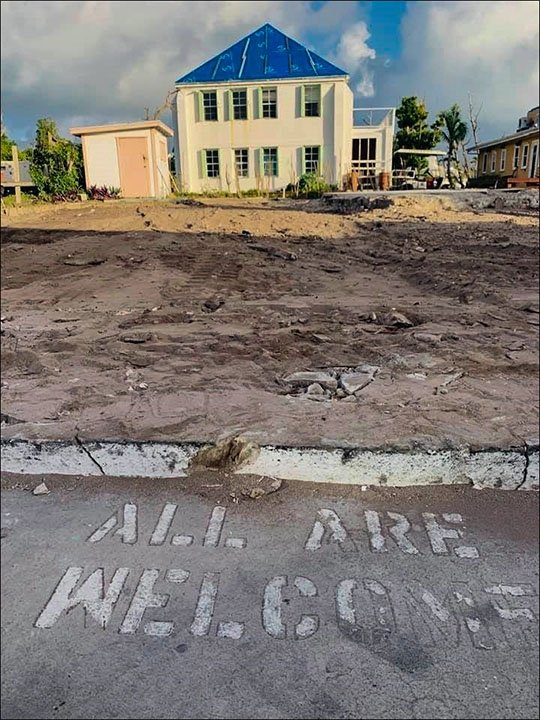CHURCH LADIES Members of the Hope Town Assembly Church Virtual Exhibition Cotuit Center for the Arts
Thu, August 06, 2020
Church Ladies is a photodocumentary of my connection to Hope Town, Abaco, Bahamas and to Haitian members of the Hope Town Assembly Church. After the wake of Hurricane Dorian there was an outpouring of concern and offers of generous support. But when one disaster overshadows another, top-of-the-hour stories become old news. We tend to forget and our willingness to help can diminish. This body of work is a reminder that the need for aid still exists.
Hurricane Dorian
On September 1, 2019 Hurricane Dorian reached Category 5 intensity with maximum sustained winds of 185 mph making landfall in Elbow Cay, The Bahamas. The ridge of high-pressure steering Dorian westward collapsed causing Dorian to stall. For nearly two days, Dorian moved at just 1 mile per hour. Wind gusts blew more than 200 mph. The storm generated 18 to 23 feet of coastal flooding from storm surge. More than 3 feet of rain fell. Many of the highest concentrations of fatalities were in the illegally constructed shantytowns of Marsh Harbor on Grand Abaco. Bodies were trapped under mountains of rubble; many were swept away with their homes. Tens of thousands of residents were displaced.
Rebuilding after Hurricane Dorian— a country which depends heavily on tourism for half of its annual gross domestic product—took another hit from the threat of coronavirus. Commencing Tuesday, August 4 the Prime Minister of The Bahamas, announced a two-week national lockdown.
Elbow Cay Lighthouse still stands, a beacon of hope for residents who plan to rebuild. The Hope Town Sailing Club posts updates on the recovery stage. https://www.hopetownsailingclub.com/island-news/
Donations are best made directly to:
Hope Town Volunteer Fire and Rescue through the DonorBox
Donate link is on our website http://htvfr.org/how-to-help.html
U.S. citizens can make tax-deductible donations of $250.00 or more online via www.PercAbaco.org/how-to-donate/paypal-donations and checking Hope Town Fire and Rescue from the charity list or by check mailed to:
PERC, Inc. (Preservation, Environment, Recreation, Community) PERC, Inc. P.O. Box 232, Grand Isle, VT 05458 USA.
For us to receive your donation, you must say that the funds are for the Hope Town Volunteer Fire and Rescue efforts.
Donations will be immediately process and distributed to HTVFR See their website for exact instructions and background information. https://www.percabaco.org
Where is Hope Town?
Hope Town is a small village on Elbow Cay, located in the Abaco islands in the northern Bahamas. A red and white striped lighthouse—the last kerosene powered, manually operated light in the world—is its most recognized landmark. Our rental cottage overlooked the harbor which provides safe moorings for boaters but is not deep enough for cruise ships. Ferry services connect to Marsh Harbor, the airport, and the rest of the world. At sunset, blowing conch shells is a traditional way to end each day. My husband and I first visited Hope Town in February 2017.
Hope Town Assembly Church
When I stay in one place long enough to experience daily routines of life, I look for a photographic theme. I was walking along Back Street on a Sunday morning when I heard music pouring from the windows of a turquoise building. ALL ARE WELCOME was stenciled on the doorstep of the main entrance. I went in and took a seat on a folding chair at the back of the church.
It was extremely hot. Next to me was a roll of paper towels and a bottle of water. The Reverend Mr. Clyde P. Bain asked if anyone was a visitor. I raised my hand and said I was from Cape Cod, Massachusetts. There was a welcoming round of applause. The service lasted more than two hours, spoken in Haitian Creole and English. Later I sent the Reverend Mr. Bain an e-mail introducing myself and explaining that I would like to photograph a series of Church Ladies… “only if you find my presence not to be offensive.”His response was, “Hi. We appreciated your presence and look forward to your return this coming Sunday.”
Next Sunday after the Reverend Mr. Bain explained to the assembly why I had returned, I set up my “studio” across from the church in the shade of a wooden building. Church Ladies images are street portraits not formal studio shots. Nearly all wanted to smile. I tried to develop a rapport between each subject by making eye contact, suggesting poses, and hoping to capture more than a likeness. Each photo shoot was less than five minutes. I never knew which images were keepers until I returned home to study them on my computer.
Nelta was my first Church Lady. I would photograph her again on two more visits to Hope Town.
I sent the Reverend Mr. Bain another e-mail to thank him. He wrote: “As you have seen we are doing a renovations but the real task is the work ahead because we are demolishing the entire building other than the main sanctuary and building a new multi purpose worship center... Do you have a fellowship that you are part of?”
My reply, “No. I don’t have a fellowship, but I appreciated what you said during the welcome, that every little bit (of faith) helps.”
Second Year: The first thing I did upon returning to Hope Town, was to visit the church. The old building sparkled with a new coat of paint; however, my studio was a pile of roof shingles and plywood. It would be impossible to ask anyone to stand in all that debris. I hoped it would be removed in a few days.
What a surprise to recognize Elmita arriving for the eleven o’clock service. The inside of the church was completely transformed. New cushioned seats, carpeted floor, maroon colored window swags…and air conditioning! A customary part of the church’s mission is meet and greet—not just nodding to your neighbor and politely shaking hands. Everyone gets up and moves around. As I presented my portfolio of black and white prints, I worried how Elmita would respond.
“Are you happy with this?”I asked.
She gave me a big smile. Immediately she wanted to see the other prints and took it upon herself to distribute them.
“Where isGigi’s picture?”
I explained I was sorry, but I did not have one of Gigi, that some of the photos I took the previous year had to be retaken. Luckily, the pile of rubble outside had been removed. At the end of the service ladies streamed out of the church and stood in line to have their photos taken. There was Gigi.
Mona, who is also Mrs. Bain, was the last person I photographed the second year. We chatted for a while. She told me about her children, and her life working within the assembly. She said my “ministry”—as she called it—was to use my photography in special ways.
Third Year: I arrived a little before eleven and took my place in the back row hoping to see Elmita. Male parishioners generally sit on the left side of the church. Nelta’s family was toward the front. I recognized Gigi, butI did not see Elmita.
Sister Monise is one reason why during a long service children are remarkably well-behaved. From the rear of the church, she keeps an eye on young members. From time to time, she patrols the aisles tapping a girl on the shoulder to stand or she leans over two brothers for a little chat. Babies are handed off between women and young girls. If a baby begins to fuss, Monise takes the child in her arms for a little walk.
A special part of this Sunday’s worship included Reverend Bain holding up Stanley, Nelta and her husband’s seventh-month old son. Reverend Bain reminded Stanley’s parents and his godparents of the spiritual responsibility of the teachings of the Bible. I was asked to address the assembly. With a translator, I talked about the beauty, poise, and pride of faith I found in all the Church Ladies mentioning those present by name. I said it was my honor to be their “official photographer.”
Haitian women old and youngdress up for Sunday service. Elise’s dress was a black and white photographer’s dream come true. A swarm of young Church Ladies asked to be photographed. What a joy to connect with Gabriella.
When everyone had gone, The Reverend Mr. Bain invited me back inside the church. I asked about Elmita. He informed me that she had been deported a few weeks ago. My heart ached with worry that her life would become unbearable in a country so wracked with poverty and unrest. Reverend Bain booted up his computer to show me architectural drawings of the worship center his assembly planned to build. He mentioned looking for property closer to the ferry dock. I wished him good luck and hoped to see him again next year. As of this writing, I have not been able to contact him.
I want to thank David Kuehn, executive director of Cotuit Center for the Arts, for presenting Church Ladies as a virtual exhibition on https://youtu.be/aGX8KA9_bac
Thanks to Alan Trugman for preparing the digital video, and Bob Korn for his guidance on printing black and white portraits. Museums like CCftA require financial support to make art visible to a concerned audience: https://ci.ovationtix.com/31005/store/donations/12665
